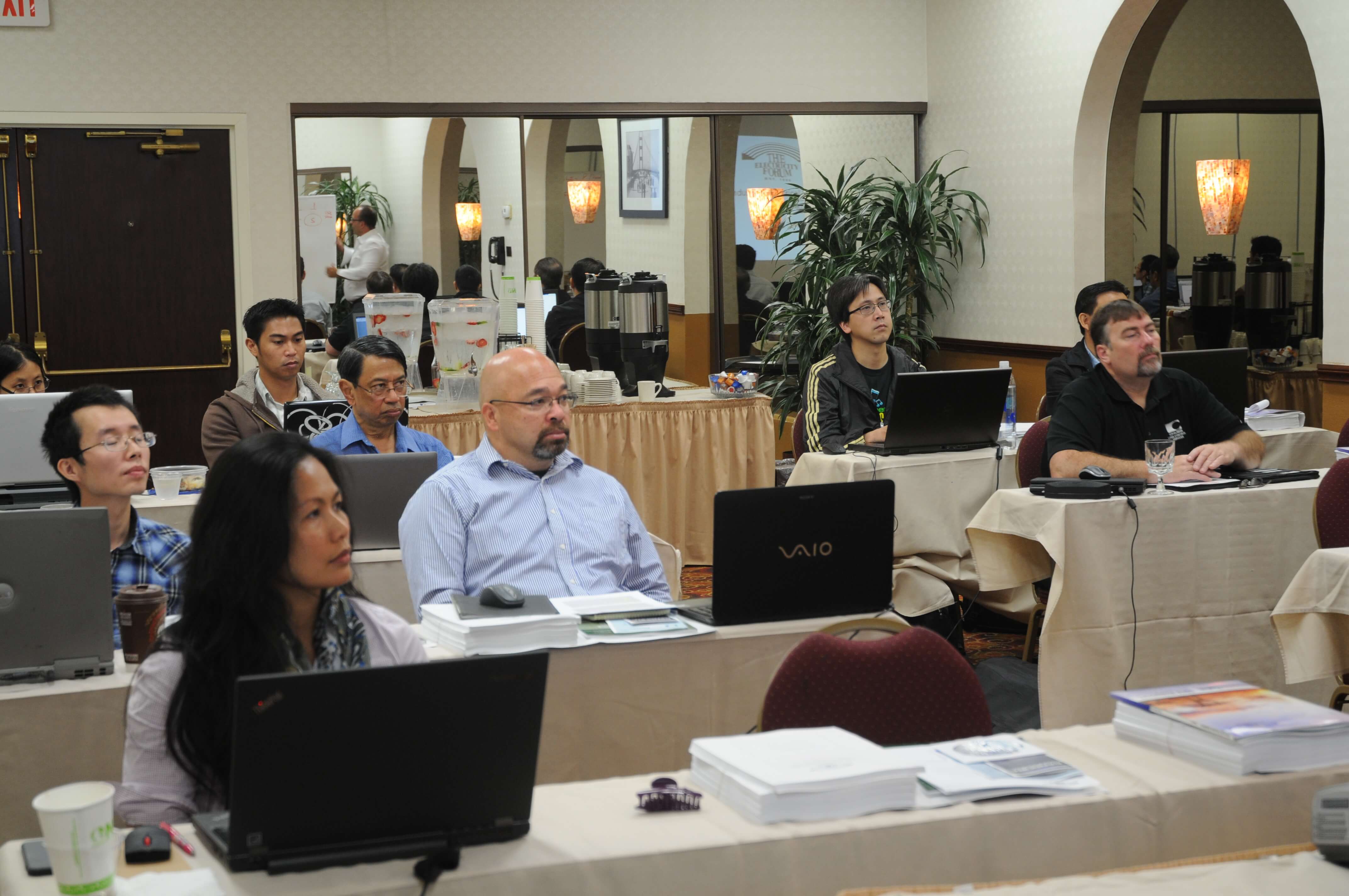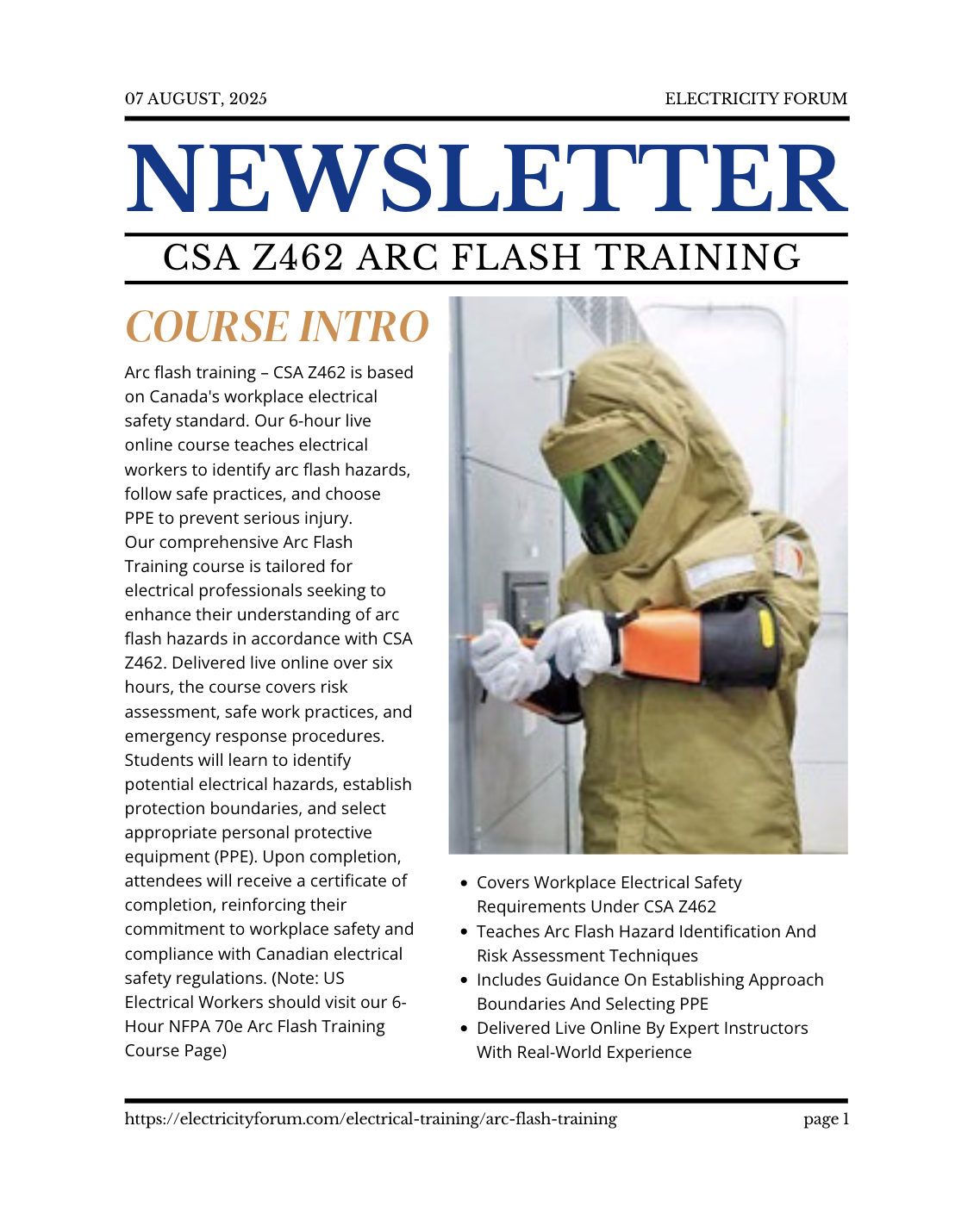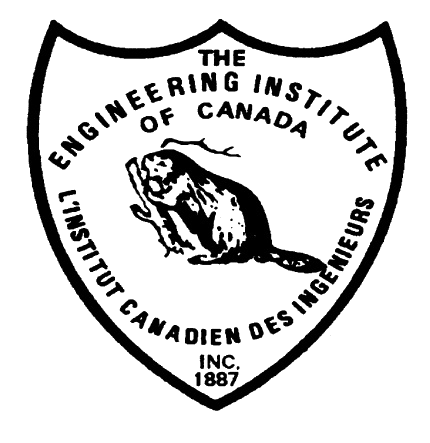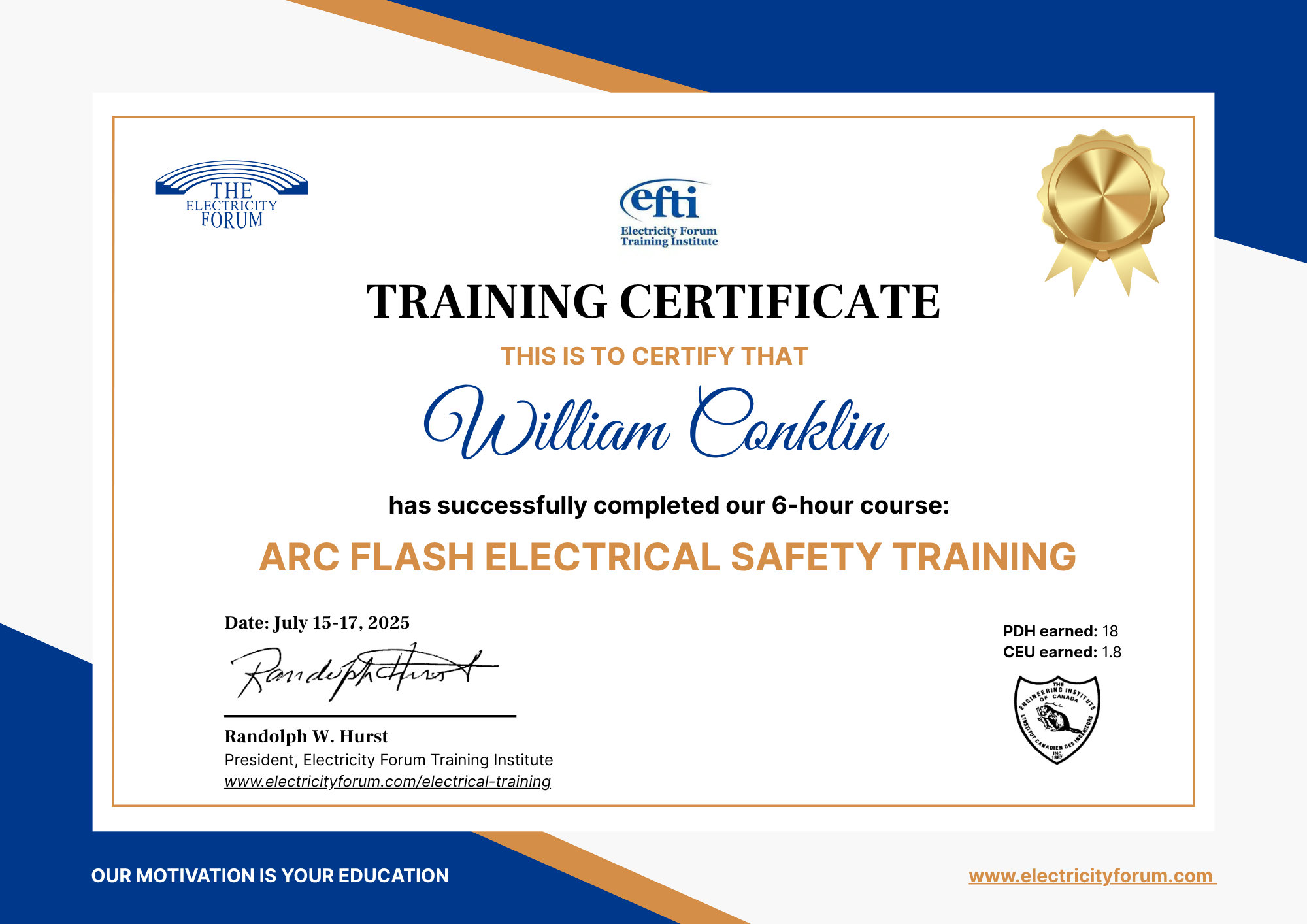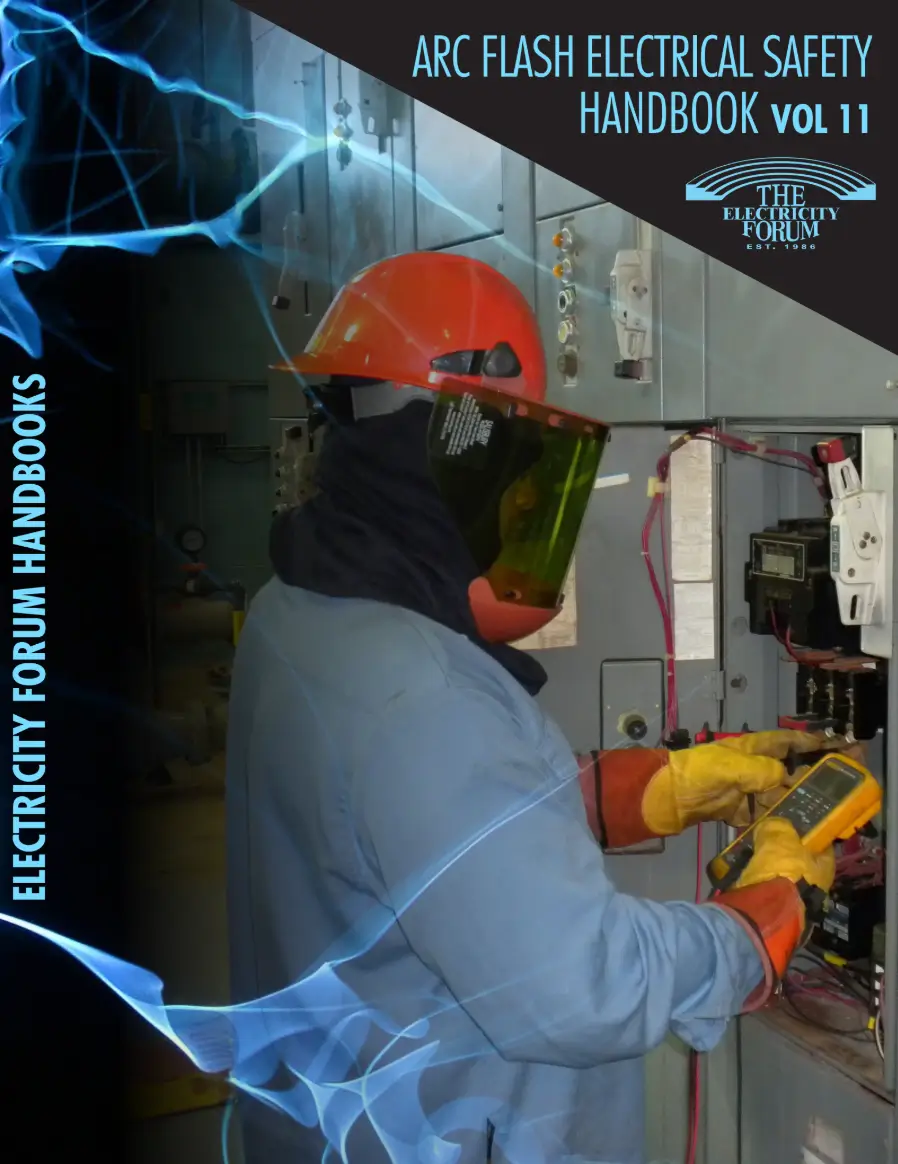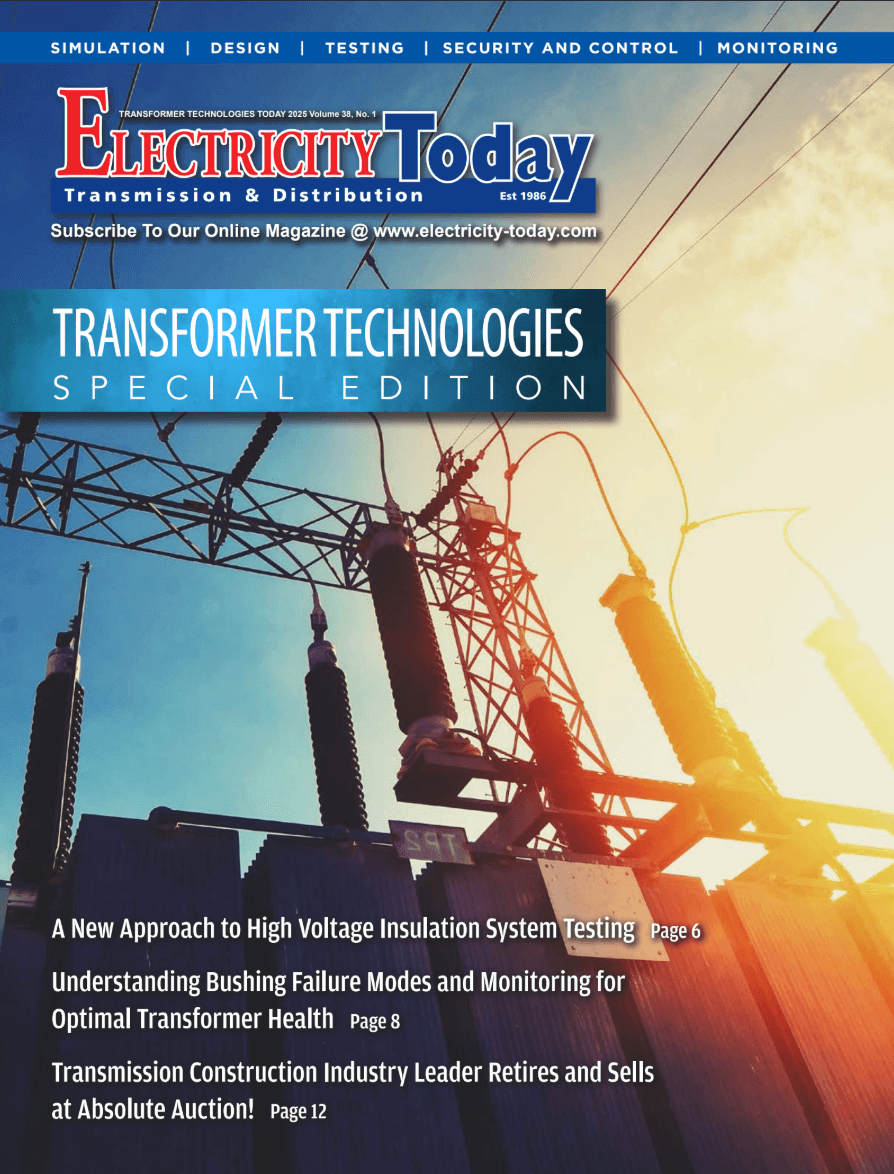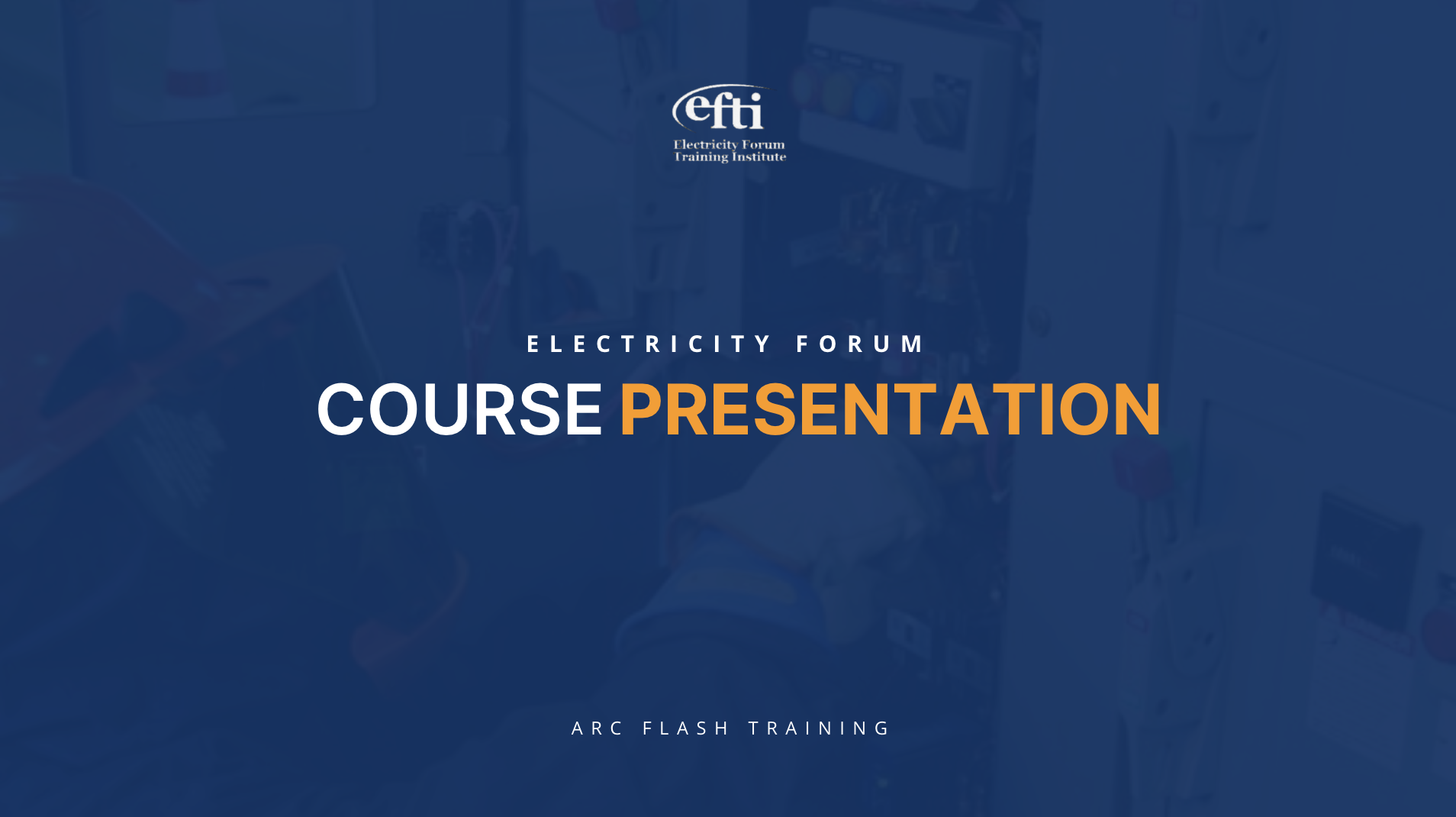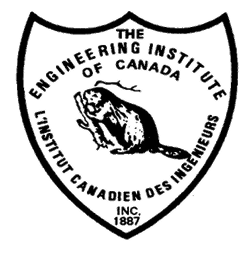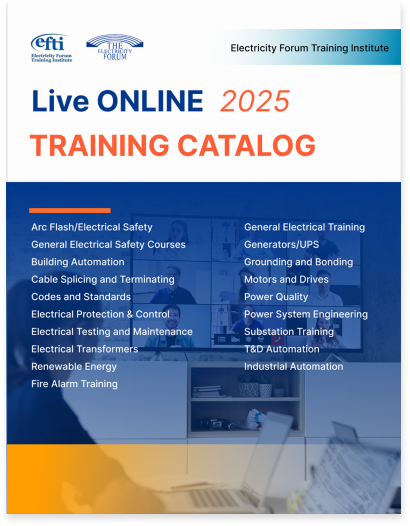Advanced Electrical Grounding
DAY ONE
SESSION 1: STATE OF THE ART
- Importance of Grounding Systems
- Advanced Grounding System Definitions
- Advanced Components of a Grounding System
- Types of Grounding Systems
- Detailed Requirements for a Grounding System
- Advanced Electrical Grounding Concepts
- Voltage and Current Distribution in the Soil
- Voltage Drop around a Grounding Electrode
- Fault Current Calculation
SESSION 2: ADVANCED GEOLOGY CONSIDERATIONS
- Earth Crust Composition
- Resistivity and Conductivity Properties of the soil
- Properties of Different Soils
- Electrical Conductivity of the soil
- Resistivity Measurements
- Wenner Method
- Measurement Registry
SESSION 3: ADVANCED GROUNDING OVERVIEW
- Why Ground Circuits and Systems
- Grounding methods
- System Grounding
- Single Point Grounding
- Solid Grounding
- Impedance Grounding
- Reactance Grounding
- Resistance Grounding
- Isolated Grounding
- Ground Faults
- Grounding Systems
SESSION 4: GROUNDING ELECTRODE SYSTEM DESIGN MODELLING
- Advanced Grounding Theory
- Parameters, Measurements and Calculations
- Grounding Electrodes: Construction And Installation
- Ground Resistance and Resistivity
- Grounding Electrode Conductor
- Electrical Grounding and Corrosion
- Materials-Splicing
- Installation and Protection
- Sizing the grounding Electrode Conductor
SESSION 5: ADVANCED GROUNDING SYSTEM DESIGN
- Steps to Achieve a Proper Grounding System
- Determination of Parameters
- Design
- Analysis
- Topology
- Materials
- Grounding Electrodes
- Low Voltage Systems
- Basic Medium/High voltage Systems
- Resistance Measurement
- Measurement for Touch and Step Voltage
- Grounding in Artic Regions
SESSION 6: CIRCUIT GROUNDING
- How to ground AC Systems
- How to ground DC systems
- Grounded Conductor
- Direct Current Systems
- Alternating-Current System
SESSION 7: FAULT PROTECTION SUBSYSTEMS
- Major Requirements: Leakage Current, Proper Sizing
- Generators
- Substations
- Transformers
- UPS systems: Online, Standby, Line Interactive, Alternative
- Installation
- Sizing the Equipment grounding
- Identification of the Equipment grounding Conductor
- Electric Shock
- Grounding and electric Shock
DAY TWO
SESSION 8: LIGHTNING PROTECTION SYSTEMS
- The Phenomenon of Lightning
- Development of Lightning Flash
- Flash Parameters
- Influence of Structure Height
- Lightning- Characteristics
- Electrical Effects
- Basic Protection Requirements
- Protection Systems
- Rolling Sphere Concept
- Electro-Geometric Method
- Lightning Protection System Specifications
SESSION 9: ADVANCED INDUSTRIAL ELECTRICAL SYSTEMS GROUNDING STRATEGIES
- Grounding Subsystems
- Exterior Ground Ring
- Interior Ground ring- Halo Ground
- Telecommunication’s Site Grounding
- Low Frequency Networks
- High frequency Networks
- Telecommunication Rooms and Closets
SESSION 10: ADVANCED ELECTRONIC & COMPUTER EQUIPMENT GROUNDING SYSTEMS
- Computer and Electronic Equipment Grounding
- Data Processing Equipment Grounding
- Electronic Security Equipment Grounding
- System Reference Zero
- Detection of a faulty Neutral-Ground System
- Sizing Wiring to meet Computer Industry Standards
- Grounding line Treatment Devices
- Transient Overvoltage Protector Grounding
- Gas Tubes
- Metal Oxide Varistors
- Silicon Avalanche Diodes
SESSION 11: SIGNAL/INSTRUMENTATION GROUNDING
- Signal Grounding
- Grounding Procedures
- Lower Frequency Equipment
- Cabinet Grounding
- Bonding Practices
- Higher Frequency Equipment
- Equipment Containing both Lower and Higher Frequency Circuits
- Shielding Guidelines
- Instrumentation Grounding
- Common Mode Noise Control
- Instrumentation Grounding
- Analog Systems
- Grounded and Ungrounded Transducers
- Amplifiers
- Digital Data Systems
- Equipment Inspection and Test Procedures
SESSION 12: EMI ON ELECTRONIC CIRCUITS
- Susceptibility- Immunity
- Cable Shielding and Grounding
- Shields grounding
- Coaxial Cables
- Losses by Absorption and reflection
- Grounding Low and High frequency Shielding
- Grounding High frequency Shielding
- Coaxial Cables
- Superficial Resistivity
- Resonance and Skin Effect
- EMI (Electromagnetic Interference)
- Inductive, Capacitive and Radiation Coupling
- RFI (Radio frequency Interference)
- Electrostatic Discharge
SESSION 13: ADVANCED ELECTRICAL GROUNDING APPLICATIONS
- Transmission Lines Grounding
- Substation Grounding
- Distribution Transformer Grounding
- Reflector Light Pole Grounding
- Motor Grounding
- Telecommunications site Grounding
- Satellite System Grounding
- High Frequency Grounding System
- Metallic Fence Grounding
- Tanks Grounding
FOUR CASE HISTORIES INCLUDED:
THERE ARE FOUR CASE STUDIES THAT WILL BE PRESENTED: PETROCHEMICAL, TELECOMMUNICATION, COMPUTER FACILITY, AND A MANUFACTURING PLANT. SECOND DAY ALSO INCLUDES A LABORATORY SECTION WHERE A THE PARTICIPANTS ARE TAUGHT HOW TO PERFORM A GROUNDING AND POWER QUALITY SITE SURVEY. MEASURMENT PERFORMED: GROUND RESISTANCE AND RESISTIVITY, POWER QUALITY PARAMETERS SUCH AS: VOLTAGE, CURRENT, LOAD BALANCE, POWER FACTOR, DISPLACEMENT POWER FACTOR, VOLTAGE AND CURRENT HARMONICS, EFFECTIVE POWER (KW), APPARENT POWER (KVA), REACTIVE POWER (KVAR), K FACTOR FOR TRANSFORMERS, ETC, TO DIAGNOSE AND SOLVE MOST COMMON PROBLEMS.
Review of expectations
Questions and Answers
COURSE TIMETABLE
Both Days:
Start: 8:00 a.m.
Coffee Break: 10:00 a.m.
Lunch: 12:00 noon
Restart: 1:15 p.m.
Finish: 4:30 p.m.





